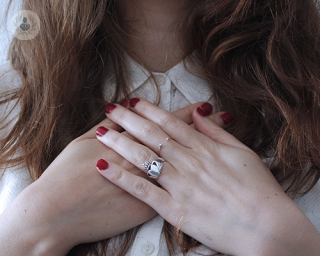Stretta
What is the Stretta procedure?
Stretta is an endoscopic treatment for gastro-oesophageal reflux disease (GORD) designed to treat acid reflux in a minimally invasive way. Reflux occurs when the ring of muscle (sphincter) that separates the oesophagus from the stomach doesn’t close properly due to weakness and/or the presence of a hiatus hernia. Stretta uses radiofrequency energy to apply heat to this area, thickening the muscle tissue to improve its function as a barrier.
Why is it done?
The Stretta procedure is used to treat acid reflux. It may be recommended as an alternative to medical therapy in patients with mild to moderate symptoms, especially if the patient is unable or unwilling to take anti-reflux medication.
What does it involve?
Stretta involves passing an endoscope (a long, thin tube, equipped with a light and camera) into the mouth of the sedated patient and down the oesophagus to the lower oesophageal sphincter. The endoscope used in the Stretta procedure is also equipped with electrodes, which emit radiofrequency energy. This energy heats the muscle, after which the endoscope sprays cold water to cool the tissue. This heating and cooling process is repeated six times at 5 mm intervals between the lower oesophagus and the top of the stomach.
The exact mechanism behind why the Stretta procedure works is poorly understood, and its recommended use has been somewhat controversial, with different medical groups supporting and discouraging its use. Some studies support its efficacy, while others have concluded otherwise.
Aftercare
Stretta is a relatively safe, minimally invasive treatment that does not require stitches and is usually performed as a day case. The patient is usually able to go home after the procedure, but should follow their doctor’s advice as regards to diet and medications in the time immediately after Stretta.
Alternatives to the Stretta procedure
The main alternative to Stretta is anti-reflux medication, which usually takes the form of proton pump inhibitors (PPIs). Like Stretta, these are generally used to treat mild to moderate reflux. In serious cases of GORD, surgery is usually recommended in the form of the Nissen fundoplication.

